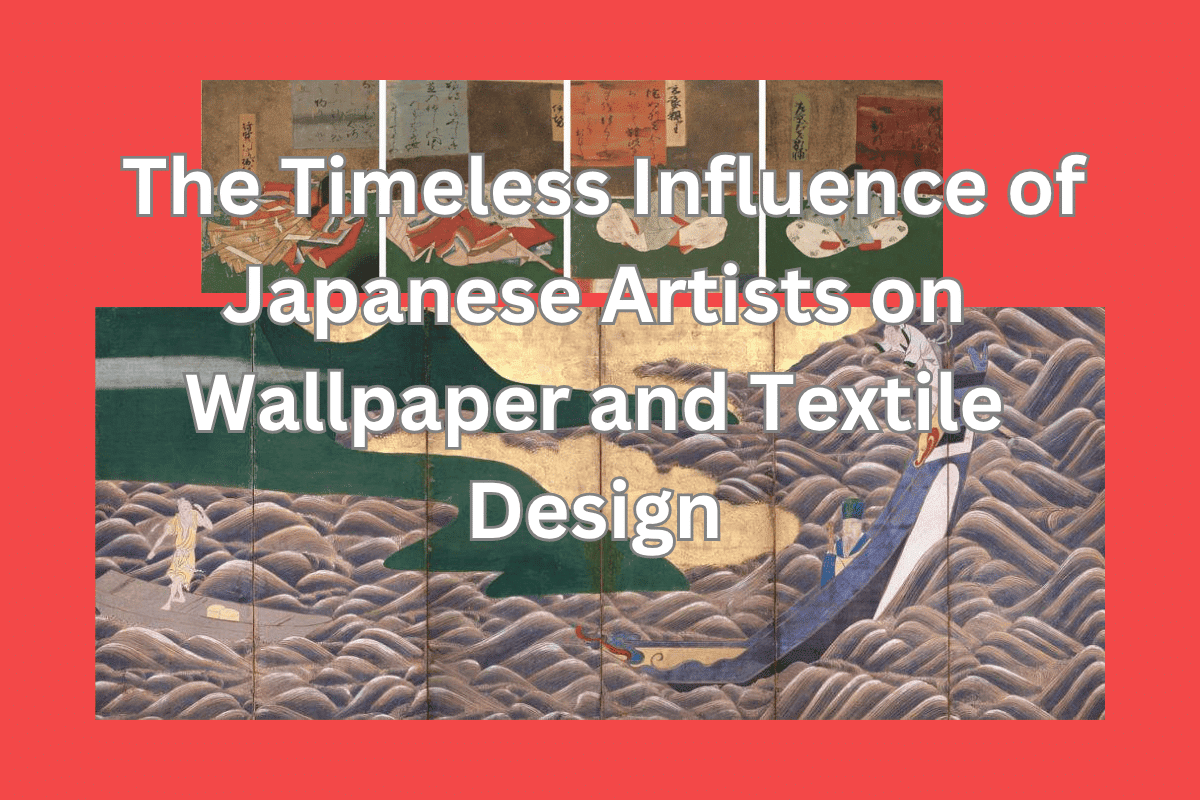Japanese art has long been celebrated for its elegance, attention to detail, and profound connection to nature.
Over centuries, Japanese artists have developed unique styles that blend simplicity with sophistication, creating works that continue to inspire designers worldwide. In particular, wallpaper and textile design have been deeply influenced by traditional Japanese aesthetics, which emphasize harmony, balance, and the beauty of natural forms.
Table of Contents
- 7 Iconic Japanese Artists Who Revolutionized Wallpaper and Textile Design
- Check Out Our Deep Dive Podcast
- Related Questions
7 Iconic Japanese Artists Who Revolutionized Wallpaper and Textile Design
Read on as we explore seven iconic Japanese artists whose work has shaped the world of wallpaper and textile design, leaving a legacy that endures to this day.
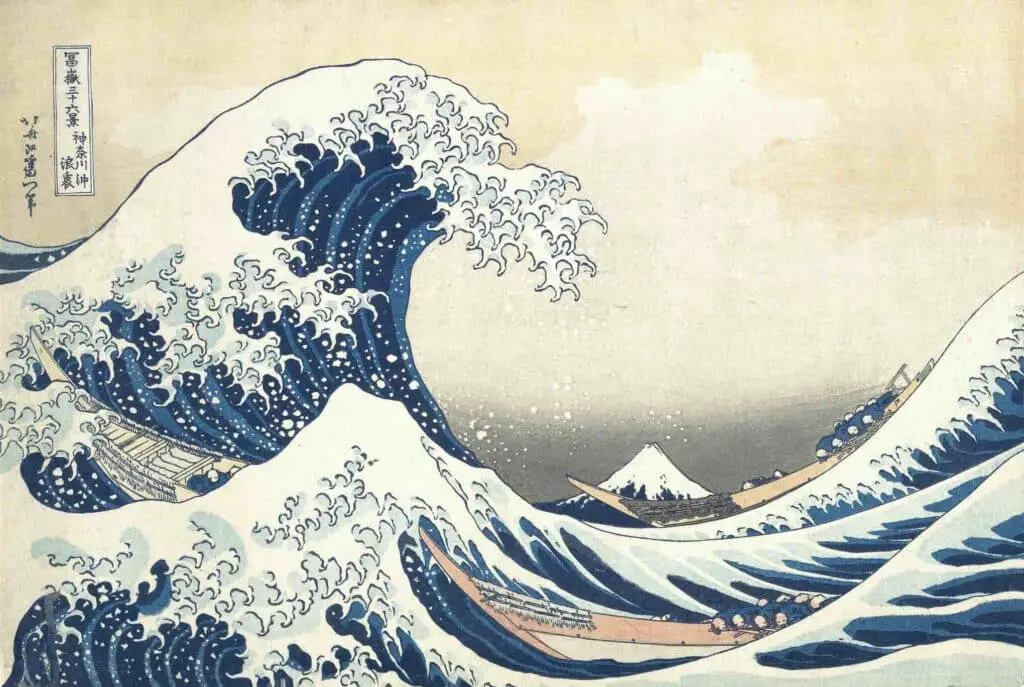
1. Katsushika Hokusai (1760–1849)
Katsushika Hokusai is one of the most famous Japanese artists, renowned for his ukiyo-e woodblock prints. His iconic series Thirty-Six Views of Mount Fuji includes The Great Wave off Kanagawa, a masterpiece that has become a global symbol of Japanese art.
Why Hokusai Influenced Wallpaper and Textile Design
Hokusai’s work is characterized by bold compositions, intricate details, and a deep appreciation for the natural world. His ability to capture the movement of water, the majesty of mountains, and the delicate beauty of flora has made his art a timeless source of inspiration for designers.
In wallpaper and textile design, Hokusai’s influence is evident in patterns that feature dramatic waves, flowing lines, and natural motifs. His use of vibrant blues and whites, combined with dynamic shapes, has inspired countless designs that evoke a sense of energy and movement. For example, wallpaper featuring wave patterns or textiles with cascading water motifs often draw directly from Hokusai’s iconic prints.
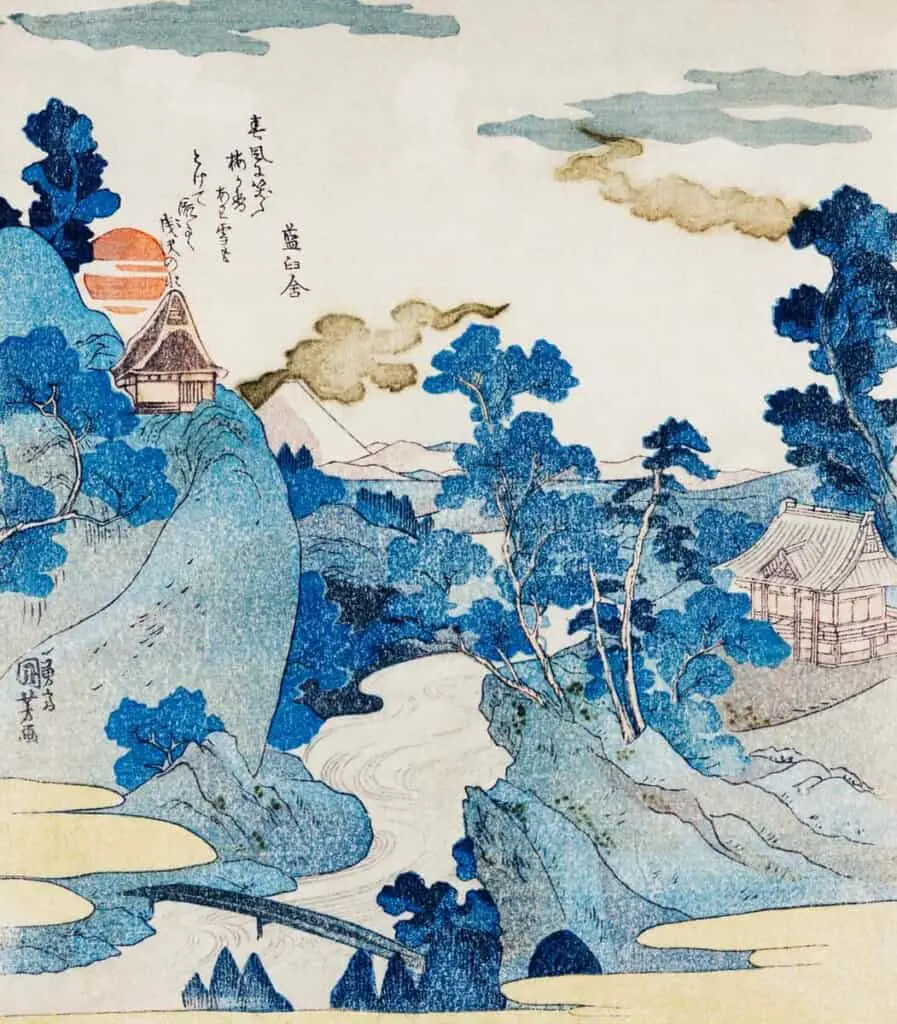
2. Utagawa Hiroshige (1797–1858)
Utagawa Hiroshige, another master of ukiyo-e, is celebrated for his serene landscapes and depictions of everyday life in Japan. His series, such as The Fifty-Three Stations of the Tōkaidō and One Hundred Famous Views of Edo, capture the beauty of natural and urban landscapes with a poetic touch.
Why Hiroshige Influenced Wallpaper and Textile Design
Hiroshige’s art stands out for its soft color gradients, intricate details, and atmospheric compositions. His ability to convey the changing seasons and the tranquility of nature has made his work a favorite among designers looking to create calming and elegant patterns.
In wallpaper and textile design, Hiroshige’s influence can be seen in the use of subtle color transitions and nature-inspired motifs, such as cherry blossoms, rivers, and distant mountains. His work inspires designs that evoke a sense of peace and harmony, making them ideal for creating serene interiors. The use of layered landscapes in wallpaper, where one can see hills, trees, and skies fading into the distance, reflects Hiroshige’s mastery of perspective and depth.
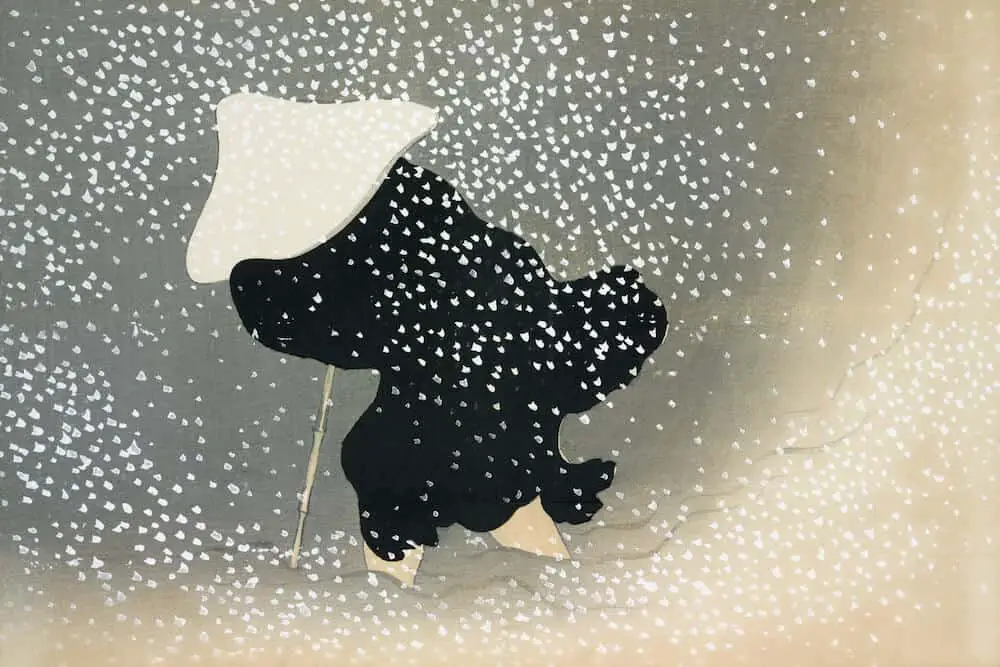
3. Kamisaka Sekka (1866–1942)
Kamisaka Sekka was a leading figure in the Rinpa school of art, a movement that emphasized bold compositions, vibrant colors, and stylized depictions of nature. Sekka is often credited with modernizing traditional Japanese art by incorporating Western techniques and sensibilities.
Why Sekka Influenced Wallpaper and Textile Design
Sekka’s work is a fusion of traditional Japanese aesthetics and modern design principles. His bold use of color, geometric patterns, and stylized nature motifs have had a profound impact on wallpaper and textile design. Sekka’s ability to simplify complex forms into elegant, decorative patterns makes his art particularly well-suited for these mediums.
Designs inspired by Sekka often feature bright, contrasting colors and abstracted natural elements, such as flowers, waves, and clouds. His work bridges the gap between traditional craftsmanship and modern design, making it a timeless source of inspiration for contemporary wallpaper and textiles.
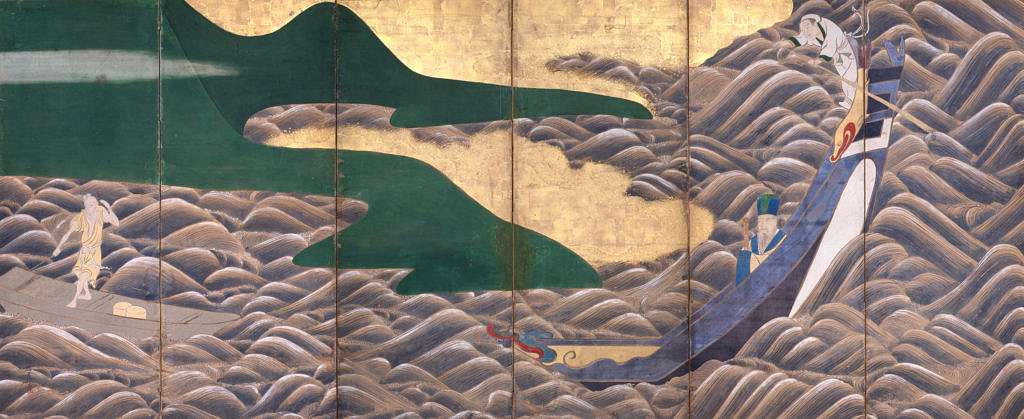
4. Ogata Kōrin (1658–1716)
Ogata Kōrin was a key figure in the Rinpa school and is known for his luxurious and innovative approach to traditional Japanese art. His works often feature gold and silver leaf, bold compositions, and stylized depictions of natural motifs.
Why Kōrin Influenced Wallpaper and Textile Design
Ogata Kōrin’s art is synonymous with opulence and elegance. His use of gold and silver backgrounds, combined with simplified and stylized natural forms, creates a sense of luxury that has greatly influenced high-end wallpaper and textile design.
Designs inspired by Kōrin often incorporate metallic elements to add a touch of sophistication. His stylized depictions of flowers, such as irises and plum blossoms, have become iconic motifs in Japanese-inspired wallpapers and textiles. The flowing lines and asymmetrical compositions in his work also reflect the Japanese aesthetic principle of wabi-sabi, which celebrates the beauty of imperfection and impermanence.
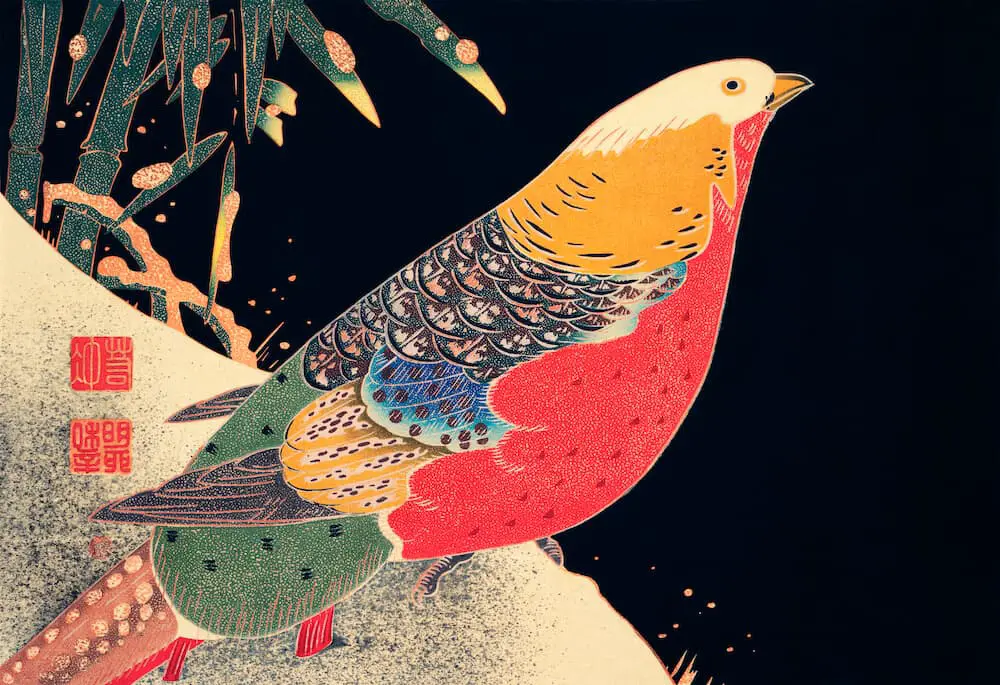
5. Ito Jakuchu (1716–1800)
Ito Jakuchu was a painter of the Edo period known for his intricate and vibrant depictions of flora and fauna. His works often feature birds, flowers, and other elements of nature rendered with extraordinary detail and vivid colors.
Why Jakuchu Influenced Wallpaper and Textile Design
Jakuchu’s attention to detail and his ability to capture the essence of living creatures make his work a treasure trove of inspiration for wallpaper and textile designers. His paintings often feature dynamic compositions, with birds in flight, blooming flowers, and intricate foliage that bring a sense of life and movement to his art.
In wallpaper and textile design, Jakuchu’s influence is evident in patterns that celebrate the richness of nature. His vibrant color palette and meticulous attention to detail inspire designs that are both visually striking and deeply connected to the natural world. Textiles featuring detailed bird and flower motifs often draw directly from Jakuchu’s work, creating pieces that feel alive and dynamic.
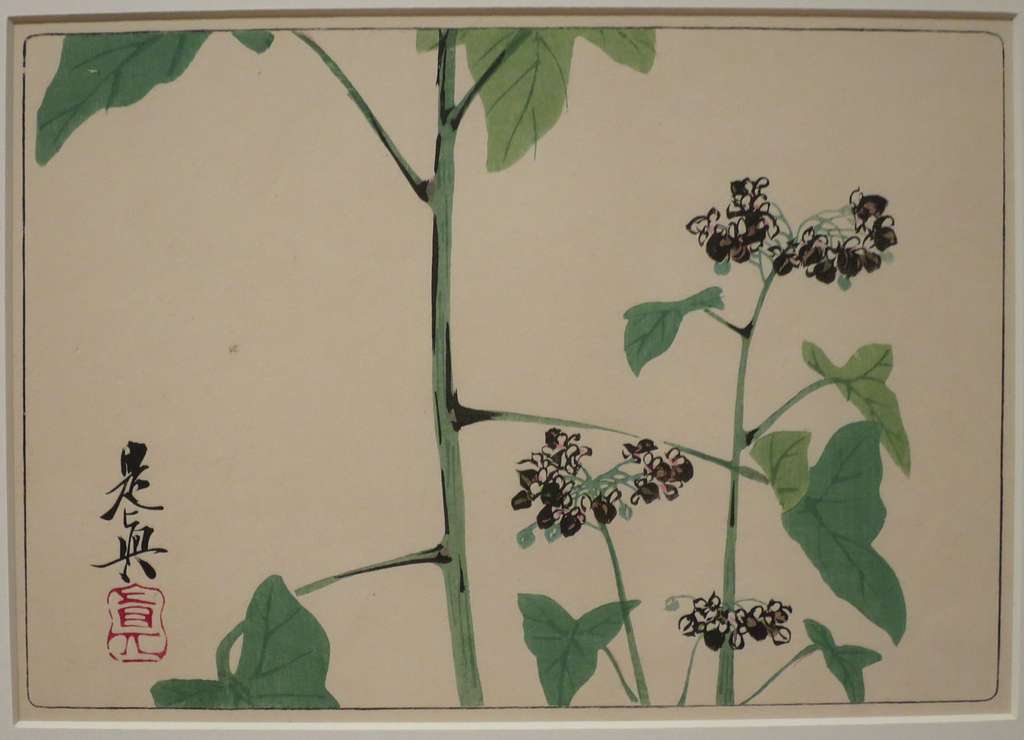
6. Shibata Zeshin (1807–1891)
Shibata Zeshin was a master of lacquer art and painting, known for his innovative techniques and naturalistic designs. His work often featured seasonal motifs and a refined, understated elegance.
Why Zeshin Influenced Wallpaper and Textile Design
Zeshin’s minimalist approach to design and his focus on seasonal themes have made his work a lasting influence on wallpaper and textiles. His art often features simple yet evocative motifs, such as cherry blossoms, autumn leaves, and bamboo, which reflect the changing seasons and the beauty of nature.
In wallpaper and textile design, Zeshin’s influence can be seen in patterns that emphasize simplicity and elegance. His work inspires designs that use negative space effectively, creating a sense of balance and harmony. Wallpapers and textiles featuring seasonal motifs, such as falling leaves or blooming flowers, often reflect Zeshin’s aesthetic principles.

7. Tawaraya Sōtatsu (1570–1640)
Tawaraya Sōtatsu was a co-founder of the Rinpa school and is renowned for his decorative screens and scrolls that featured bold compositions and luxurious materials. His work often combined gold and silver leaf with stylized depictions of nature.
Why Sōtatsu Influenced Wallpaper and Textile Design
Sōtatsu’s art is characterized by its bold use of color, dynamic compositions, and luxurious materials. His ability to transform traditional Japanese motifs into highly decorative designs has made his work a significant influence on wallpaper and textile design.
Designs inspired by Sōtatsu often feature metallic elements, such as gold and silver accents, to create a sense of luxury. His stylized depictions of waves, clouds, and flora have become iconic patterns in Japanese-inspired wallpapers and textiles. The flowing, abstract forms in his work also lend themselves well to modern interpretations, making his art a timeless source of inspiration.
The work of these seven Japanese artists has had a profound and lasting impact on wallpaper and textile design.
From the bold compositions of Katsushika Hokusai to the serene landscapes of Utagawa Hiroshige, each artist has contributed unique elements that continue to inspire designers around the world. Their mastery of nature-inspired motifs, use of color and composition, and ability to blend tradition with innovation have made their art timeless.
Today, the influence of these artists can be seen in everything from luxury wallpapers to everyday fabrics, proving that the beauty of Japanese art transcends time and continues to shape the way we design our spaces. Whether through the opulence of Ogata Kōrin or the intricate details of Ito Jakuchu, their work reminds us of the enduring power of art to connect us to nature and to each other.
Check Out Our Deep Dive Podcast
Check out our Deep Dive Podcast for more understanding about Japanese Artists and their influences.
Anita Louise Art is dedicated to art education, great artists, and inspiring others to find and create their art. We love art that uplifts and inspires. #ArtToMakeYouSmile! #ArtToMakeYouHappy!
If you are interested to see any of my art, you can find out more by clicking here. If you are interested in what inspires me and my paintings, you can discover more by clicking here.
We have a free newsletter and would love you to be part of our community; you can subscribe to the newsletter by clicking here. If you have any questions, I would be happy to talk to you. You can reach me, Anita, by clicking here.
Subscribe to our Anita Louise Art YouTube Channel filled with great videos and information by clicking here.
Join us for our podcast “5 Minutes With Art.” Spend just 5 minutes a week with us to discover and learn about great art and artists. You can find out more about our podcast by clicking here.
Related Questions
Characteristics of Japanese Ukiyo-e Woodblock Prints
Japanese woodblock prints were produced to have a mass appeal to the Japanese audience. There are a lot of characteristics in the Japanese woodblock print, such as the asymmetry of design, how the artist experiments with composition, the artist’s use of flats spaces, and the use of colors.
By clicking here, you can learn more by reading Characteristics of Japanese Ukiyo-e Woodblock Printsach Other?.
What Are Some Japanese Woodblock Print Characteristics?
There are many characteristics of a Japanese woodblock print, from the woodblock print title, artist name, and publisher’s seal; other features also include the color and subject matter. Japanese woodblock prints also have different artistic art movements.
By clicking here, you can learn more by reading What Are Some Japanese Woodblock Print Characteristics?.
What Is A Japanese Woodblock Print?
A Japanese woodblock print is, as the name implies, a print that is made by using carved woodblock and applying ink on the woodblocks to print a design on paper. The Japanese woodblock artists used woodblocks to print artistic prints and even books. Artists have used the woodblock print technique in Japan for hundreds of years.
You can learn more by reading What Is A Japanese Woodblock Print? by clicking here.

